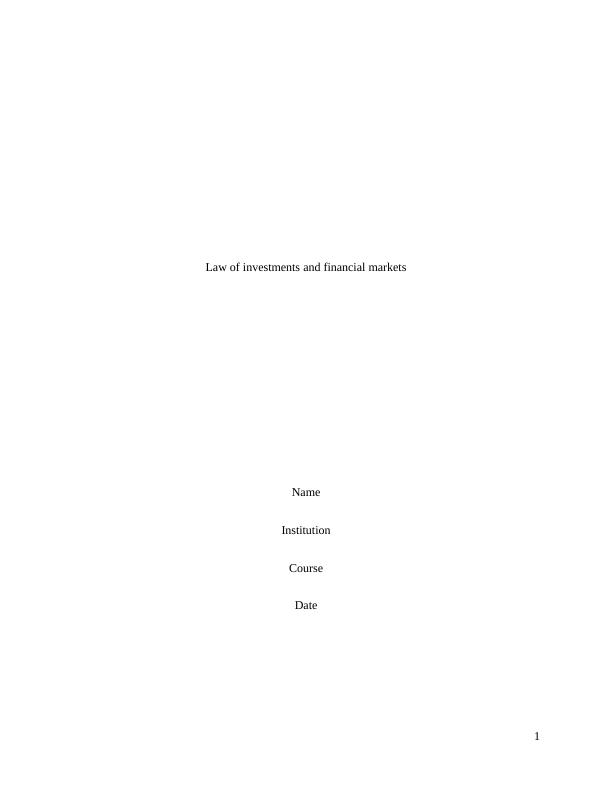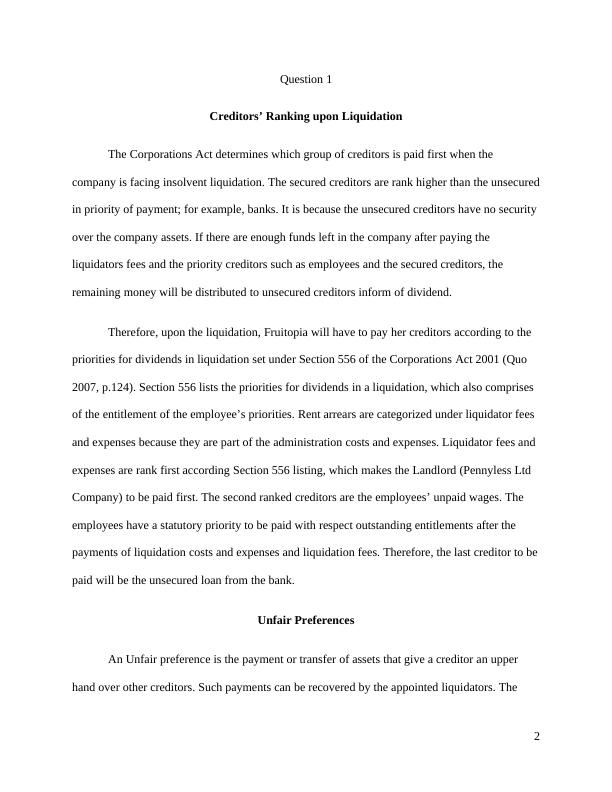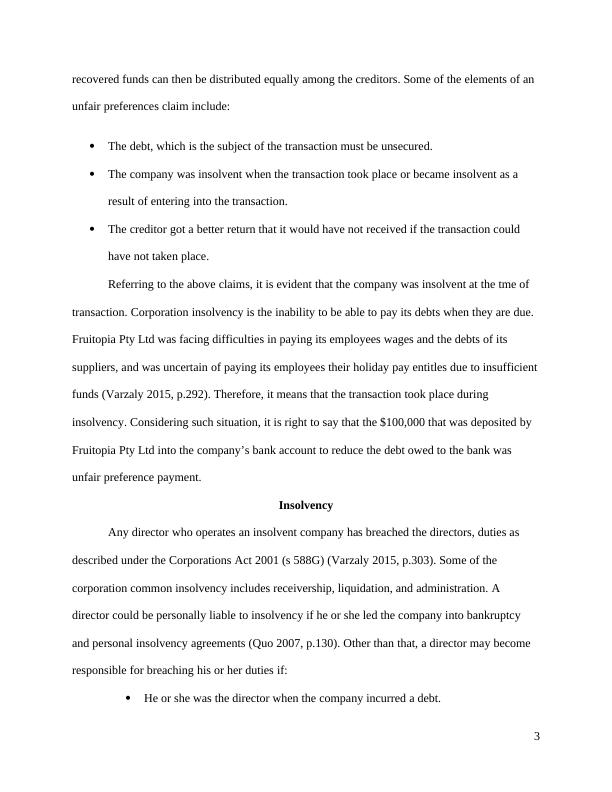Law of Investments and Financial Markets
9 Pages2514 Words53 Views
Added on 2021-05-31
Law of Investments and Financial Markets
Added on 2021-05-31
ShareRelated Documents
End of preview
Want to access all the pages? Upload your documents or become a member.
LAW303 - Corporations Law Assignment
|8
|1972
|114
Corporate Accounting: Consolidation, Liquidation, Acquisition Analysis and Investment Decisions
|9
|1859
|147
Corporate Accounting: Consolidation, Acquisition Analysis and AASB 10 Provisions
|12
|2248
|460
Insolvency Problem Questions and Answers
|29
|7522
|247
Insolvent Trading and Consequences: A Case Study of York Civil Construction Company
|5
|985
|360
Corporate Accounting: Analysis of Investments and Loans as per AASB 10
|11
|1834
|294



